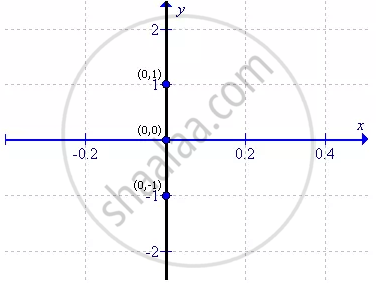Advertisements
Advertisements
प्रश्न
Draw the graph for the linear equation given below:
x = 0
उत्तर
First prepare a table as follows:
| x | 0 | 0 | 0 |
| y | -1 | 0 | 1 |
Thus the graph can be drawn as follows:

APPEARS IN
संबंधित प्रश्न
Draw the graph of the equation given below.
2x + y = 1
The following distribution gives the daily income of 50 workers of a factory.
| Daily income (in ₹) | 200-220 | 220-240 | 240-260 | 260-280 | 280-300 |
| Number of workers | 12 | 14 | 8 | 6 | 10 |
Convert the distribution above to a 'less than type' cumulative frequency distribution and draw its ogive.
Draw the graph for the linear equation given below:
y - 2 = 0
Draw the graph for the linear equation given below:
4x - y = 0
Draw the graph for the linear equation given below:
y = `(2x)/(3) - 1`
Draw the graph for the linear equation given below:
`(x - 1)/(3) - (y + 2)/(2) = 0`
Draw the graph for the equation given below:
`(1)/(2) x + (2)/(3) y = 5`.
On the same graph paper, plot the graphs of y = 2x - 1, y = 2x and y = 2x + 1 from x = - 2 to x = 4. Are the graphs (lines) drawn parallel to each other?
Use the graphical method to show that the straight lines given by the equations x + y = 2, x - 2y = 5 and `x/(3) + y = 0` pass through the same point.
Draw a graph of each of the following equations: 5x + 2y = 16
